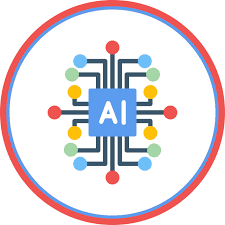Code copied to clipboard
In the dynamic landscape of web development, the need to convert HTML content into XML format arises for various reasons, including data interchange, interoperability, and compliance with specific standards. HTML to XML parsers serve as indispensable tools for this transformation process, allowing developers to bridge the gap between these two markup languages. In this article, we'll explore the significance of HTML to XML parsing and how developers can leverage parsers to seamlessly convert and manipulate web content.
Understanding HTML and XML:
HTML (Hypertext Markup Language):
HTML is the standard markup language for creating and structuring content on the web. It defines the structure of a web page through elements and attributes.
XML (eXtensible Markup Language):
XML, on the other hand, is a versatile markup language designed to store and transport data. It allows users to define their own tags, making it highly customizable for various data representation needs.
The Need for HTML to XML Parsing:
Data Interchange:
XML is often preferred for data interchange due to its flexibility and self-descriptive nature. Converting HTML to XML becomes essential when integrating web content into systems that rely on XML data.
Legacy System Integration:
In scenarios where legacy systems use XML, converting HTML to XML enables the seamless integration of modern web content with existing infrastructure.
Role of HTML to XML Parsers:
Structural Transformation:
Parsers analyze the structure of HTML documents and convert them into equivalent XML structures. This involves recognizing HTML tags, attributes, and content and mapping them to corresponding XML elements.
Attribute Handling:
HTML attributes may have different semantics than XML attributes. Parsers ensure proper handling and mapping of attributes during the conversion process.
Implementation of HTML to XML Parsing:
JavaScript Parsers:
For client-side conversion, JavaScript libraries like DOMParser or specialized parsers like html2xml.js can be employed. These allow developers to parse HTML and create XML documents dynamically.
Server-Side Solutions:
Server-side languages, such as Python with libraries like BeautifulSoup or PHP with SimpleXML, offer robust solutions for HTML to XML parsing. These solutions are particularly useful when dealing with large-scale data transformations.
Third-Party Tools:
Various third-party tools and online converters are available for one-time or occasional HTML to XML transformations. These tools often provide user-friendly interfaces and can be suitable for quick conversions.
Best Practices and Considerations:
Tag Mapping:
Understand and define a mapping strategy for HTML tags to XML elements, considering differences in semantics between the two markup languages.
Data Integrity:
Validate and ensure the integrity of the converted XML data. Handle cases where HTML structures may not map directly to XML structures.
Performance:
Consider the performance implications, especially when dealing with large datasets. Optimize the parsing process to maintain efficiency.
Conclusion:
HTML to XML parsing is a crucial aspect of web development, enabling interoperability and data interchange across different platforms and systems. HTML to XML parsers empower developers to seamlessly transform web content, providing flexibility and compatibility in an ever-evolving digital landscape. By understanding the significance of this conversion process and adopting best practices, developers can ensure smooth integration and effective use of HTML and XML in their projects.




